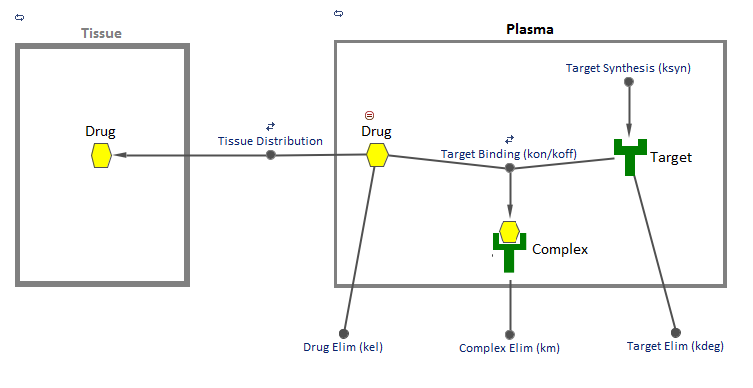Target–Mediated Drug Disposition Model
This document presents a SimBiology implementation of Mager and Jusko’s generic Target-Mediated Drug Disposition model (TMDD) as described inGeneral pharmacokinetic model for drugs exhibiting target-mediated drug disposition. Target-mediated drug disposition is a common source of nonlinearity in PK profiles for biotherapeutics. Nonlinearities are introduced because drug-target bindings saturate at therapeutic dosing levels.
In 2001, Mager and Jusko [1] proposed a generic TMDD model that accounted for saturable drug-target binding, as well as target (or receptor) mediated elimination.Drugin thePlasmareversibly binds with the unboundTargetto form drug-targetComplex.konandkoffare the association and dissociation rate constants, respectively. Clearance of freeDrugandComplexfrom thePlasmais described by first-order processes with rate constants,kelandkm, respectively. Free target turnover is described by a zero-order synthesis rate,ksyn, and a first order elimination (rate constant,kdeg). The model also includes an optionalTissuecompartment to account for non-specific tissue binding or distribution. Variants of this TMDD model have been since used to characterize the pharmacokinetics of numerous drugs.[1]

[1] Mager DE and Jusko WJ (2001) General pharmacokinetic model for drugs exhibiting target-mediated drug disposition. J Pharmacokinetics and Pharmacodynamics 28: 507–532.
